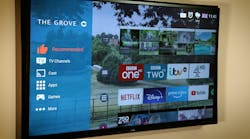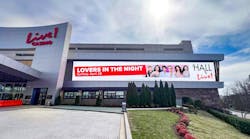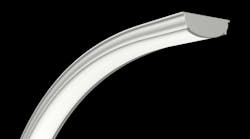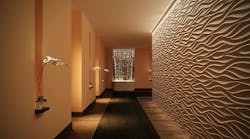Date Announced: 20 Jun 2011 Yorba Linda, Calif. DATE — LED is the lighting technology everyone’s talking about. LEDs are in our flashlights, our cars - and increasingly - a viable option for energy efficient lighting retrofit projects. But how do you decide if LED lighting is the right technology for your project? Precision-Paragon [P2] is encouraging businesses to first consider a lighting project’s goals, and then decide if LED, fluorescent, high-intensity discharge or even induction lighting is the best fit for those goals. “We’ve been seeing quite a few projects being driven by technology, and that’s really the tail wagging the dog,” said Lou Preston, [P2] national marketing director. “Companies are picking a lighting technology and forcing it into their project, when something else might be a better fit.” Because every lighting project is unique, there is no single technology that’s right for every project. “There’s a reason we manufacture more than 100 fixtures, instead of just one,” said Preston. “When our customers come to us with advice, we pride ourselves on helping them pick the best fixtures for their project, regardless of technology.”Imagine two businesses that both need outdoor parking lot lighting. One is a gas station that needs bright 24-hour lighting to attract freeway drivers to its pumps. The other is an apartment complex that needs safety lighting in its parking area from dusk till dawn. At their core, both of these projects need outdoor parking lot lighting, but it would be impossible to pick one fixture that would meet the needs of both projects. Every technology offers a unique mix of advantages, like initial fixture costs, return on investment, annual energy costs, maintenance costs, light level metrics, aesthetics and controllability.Some lights may save money at the outset, but five years later they could require expensive maintenance. Others could require a significant up-front investment, but quickly pay for themselves with big energy or maintenance savings.“Our engineers are famous for saying ‘it depends,’” says Preston. “If you ask us what the best lighting technology is, that’s the answer you’re going to get.” Even once a project’s goals have been fully defined, there might be several reasonable technology choices for a single project. That’s why Preston feels it’s important to get as much information as possible before making a technology decision.“It’s a simple equation. More information leads to better decisions,” explains Preston. “Once you understand both your lighting project’s needs and your technology options, you’ll be able to pick the technology that best meets those needs.”Eight Steps To Picking The Right Lighting Technology1. Define Your Project’s Goals: Why are you taking on a lighting project? Are you trying to slash your energy bills, go green, improve aesthetics, or simply taking advantage of utility incentives? Defining your objectives up-front is the best thing you can do to make sure your project doesn’t getsidetracked.2. Get Help: Not an energy efficient lighting expert? Find one! [P2]’s service hub offers access to wellqualified energy efficient lighting experts who can help you find the right lighting technology for your next project. Give them a call at (714) 386-5550, or send an email to [email protected]. Evaluate Viable Technologies: With most projects, there’s likely more than one lighting technology that will meet your project objectives. Define what these are.4. Pick Your Fixtures: Pick the specific fixtures from each technology that meet your project’s goals. There’s a world of difference between talking about “a fixture” and “this specific fixture from this manufacturer in this application.” Gather as much information about each fixture as you can.5. Do a side-by-side comparison: Compare the features of each fixture you selected, including financial (fixture cost, energy consumption, replacement and maintenance intervals), performance (optics, lumen depreciation, automation options, warmup times) and aesthetics.6. Prioritize, based on your project’s goals: Now that you know how your options stack up against each other, decide which features are the most important to you. Are initial costs, or long-term energy savings more important to your project? How about customizable optics, or long-term maintenance free operation? Every technology has its advantages and disadvantages, so you’ll need to select the features that fit the most closely with your project’s goals.7. Watch out for “showstoppers”: Sometimes, you run into a feature that takes a technology out of the running for your project. For example, if you’re putting fixtures in a difficult to access location, having to replace a bulb every two months would be a “showstopper,” even if that option showedthe greatest energy savings.8. Pick the Best: The best technology for your project is the one that comes the closest to meeting your goals. And of course, you don’t have to settle with just one. [P2] customers often use a mix of lighting technologies in a single retrofit. About Precision-Paragon [P2]: For nearly 20 years, [P2] has made high-quality, indoor-and-outdoor light fixtures for just about any setting—including retail, commercial and industrial spaces. [P2]’s energy-efficient lighting drastically cuts energy consumption, creating big cost savings and significant environmental benefits. Over the last two decades, [P2] has earned a reputation for going the extra distance in customer service by producing high-quality, American-made products. [P2] products are manufactured in Gainesville, Fla., Hudson, Wis., and at the company’s headquarters in Yorba Linda, Calif.
Contact
Lou Preston [P2] National Marketing Director 714-386-5550 [email protected]
E-mail:[email protected]
Web Site:www.p-2.com/




